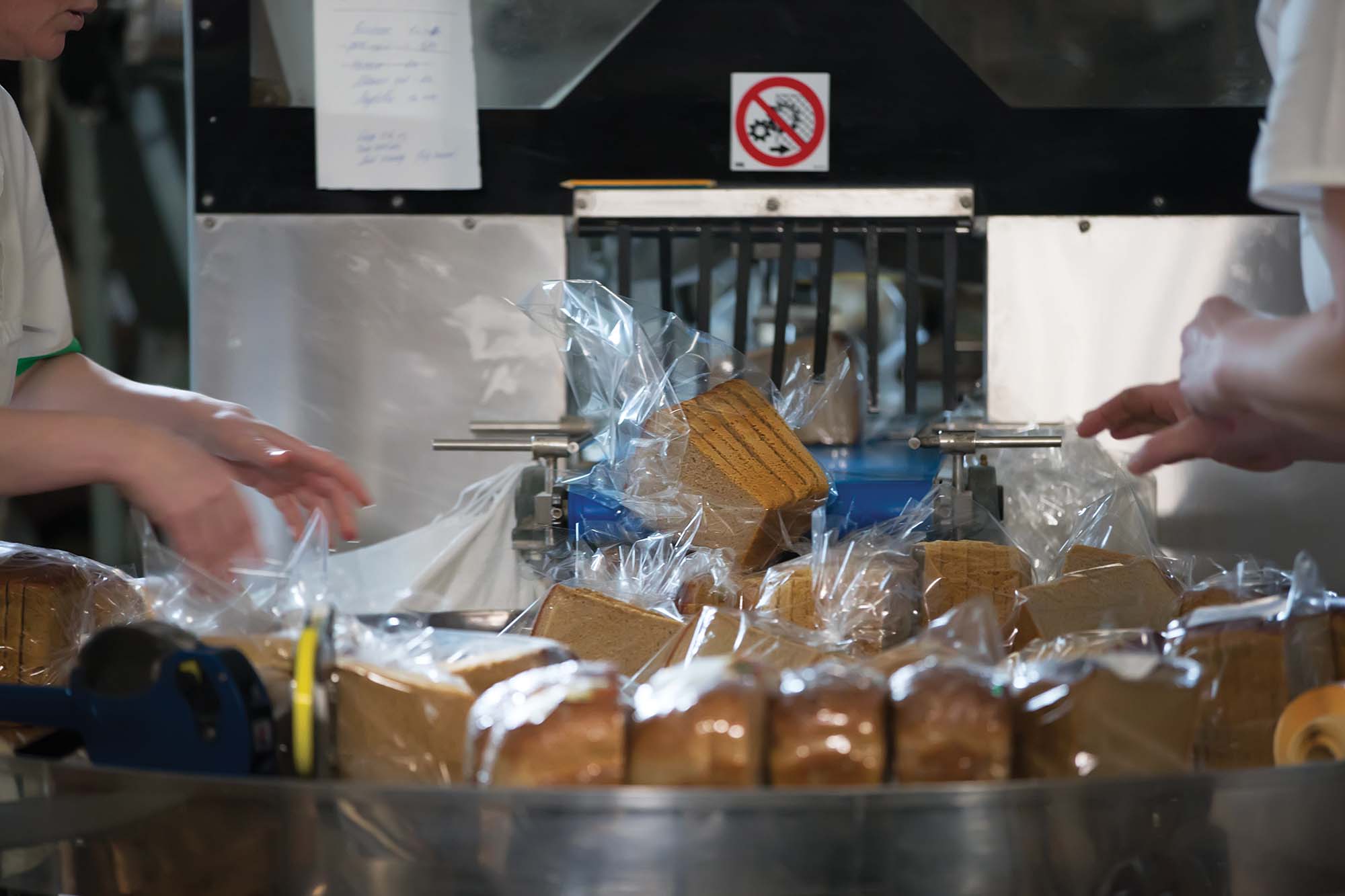
The packaging you use for your bread doesn’t just help it stand out on store shelves. It also protects your products against contamination during storage and transportation and prevents moisture loss to keep your bread fresh for as long as possible. That’s why choosing the right packaging is just as important as creating a great recipe.
There are several types of bread packaging to choose from, each with its own benefits. Below, we cover some of the broad categories to help you find the best fit for your products.
3 main types of bread packaging
Folding packaging
The packaging of bread doesn’t necessarily need to be complicated. Sometimes, it’s enough to simply pop your bread into a brown paper bag or parchment paper and fold it shut.
The main benefit of folding packaging is the cost. There’s no need to invest in hi-tech bread packing equipment, and the materials used to make it are both inexpensive and recyclable.
However, since folding packaging isn’t airtight, it doesn’t extend shelf life in the same way as other types of packaging. That’s why it’s most popular in smaller bakeries, where bread is freshly baked and customers tend to eat it on the same day.
Shrink packaging
Shrink packaging involves placing bread in a polymer plastic bag and applying heat to shrink it tightly over the product. Then, you can close it with a heat sealer to make the packaging airtight.
This is a fantastic option for single-serving breads, as they will only be exposed to the outside air before they’re consumed. That means your customers can always enjoy your bread at its freshest, even after transportation.
Bag packaging
The classic bread bag is perhaps the most iconic form of bread packaging. The bread is placed inside a thin plastic bag and sealed with a wire twist-tie or plastic clip.
Bag packaging doesn’t offer the same protection as shrink packaging, as the tie or clip doesn’t create an airtight seal. But the ability to reseal the packaging after opening makes it much more suitable for multi-serving products such as sliced loaves. And since that seal is usually very narrow, bag packaging still offers outstanding freshness for several days after opening.
3 main types of the bread packaging process
Just as different types of packaging suit different needs and products, the packaging process of bread affects your ability to meet hygiene and throughput goals.
Manual packaging
If you only manage a small baking operation, you might be able to simply package your products by hand. This is significantly cheaper and more flexible than bread packaging equipment and doesn’t require much floor space.
That said, you’ll need to enforce strict product handling rules to ensure you continue to meet minimum requirements for hygiene with this packaging process of bread. Similarly, it’s not possible to make your products airtight with manual packaging alone, meaning they will only stay fresh for a short time.
Semi-mechanized packaging
This type of bread packaging process introduces machinery to manual packaging. For example, you might have a bread bagging machine that packages your bread automatically before you seal the bag by hand.
Using machinery to limit your physical contact with the bread vastly improves packaging hygiene, provided you clean your machinery regularly. It’s also much faster than manual packaging, which allows you to keep up with higher demand.
Automated packaging
Completely automating the packaging process of your bread allows you to achieve the highest possible speeds, throughput, and hygiene standards. This means you can easily meet high demands, or even serve additional customers to grow your business. Automated packaging also ensures consistency between your products for maximum quality and brand recognition.
Automate your bread packaging process with Lenexa Manufacturing Company
Whether you’re moving up to semi-mechanized packaging or going fully automated, you’ll find the perfect new, used, or refurbished bread bagging machine in our range. Our baggers are suitable for all types of packaging of bread, and we even offer customization options to make sure they meet your precise needs.
Contact our expert sales team today to discuss which bread packaging machine would be the best fit for your bakery.
